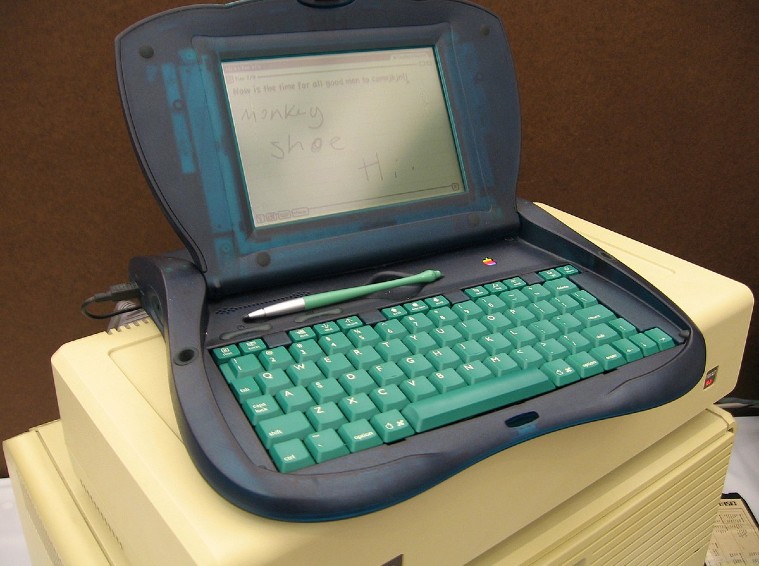
#Apple newton clamshell full
Retrospective review at the-gadgeteer. The Psion Series 3, released a year before the Newton, was much more capable but used a clamshell design with a full keyboard.Apple Confidential 2.0: The Definitive History of the World's Most Colorful Company.

^ "Sonny – Newton – The Ultra Rare Clear eMate".^ "Splorp – Newton – The elusive pink eMate".

#Apple newton clamshell upgrade
#Apple newton clamshell Bluetooth
It could be used for a number of different cards, including modems, Ethernet cards, wireless cards, bluetooth cards, and flash memory (linear and ATA/Compact Flash). In addition to the expansion slot, the eMate also featured a single non-CardBus PCMCIA slot. For example: If a memory card were to have 4 MB of DRAM and 2 MB of flash, the Newton would report having 4 MB of flash, and 4 MB of DRAM, not 5 MB of DRAM. When one of these cards was installed, the internal DRAM was disabled, but the internal flash RAM is combined with the flash on the card. Most cards expanded the data bus from 16 bits to 32 bits, as well as providing additional DRAM (program memory), and flash (storage). Companies like Newertech produced cards for the eMate. The Apple Pencil, a stylus that Apple first launched in 2015 and has since upgraded, is also a modern version of the original Newton’s note-taking digital pen, with much of the same. Both cards fit into both slots, but the ROM card was larger. It was located in the hatch under the battery door, next to the ROM card. Unlike the MessagePad line, the eMate 300 featured an internal memory expansion slot. However the eMate 300 was faster than the previous MessagePad 130. The eMate used a 25 MHz ARM 710a RISC processor and had less memory than the MessagePad 2000 which used a StrongARM 110 RISC processor and was more expandable. In order to achieve its low price, the eMate 300 did not have all the features of the contemporary Newton equivalent, the MessagePad 2000.

Power came from built-in rechargeable batteries, which lasted up to 28 hours on full charge. The keyboard was roughly 85% the size of a standard "full size" keyboard. The eMate 300 featured a 6.8" 480x320 resolution 16-shade grayscale display with a backlight, stylus pen, keyboard, infrared port, and standard Macintosh serial/ LocalTalk ports. The eMate was introduced on Mafor US$799 and was discontinued along with the Apple Newton product line and its operating system on February 27, 1998. It was the only Newton Device with a built-in keyboard. The eMate 300 was a personal digital assistant designed, manufactured and sold by Apple Computer to the education market as a low-cost laptop running the Newton operating system.


 0 kommentar(er)
0 kommentar(er)
